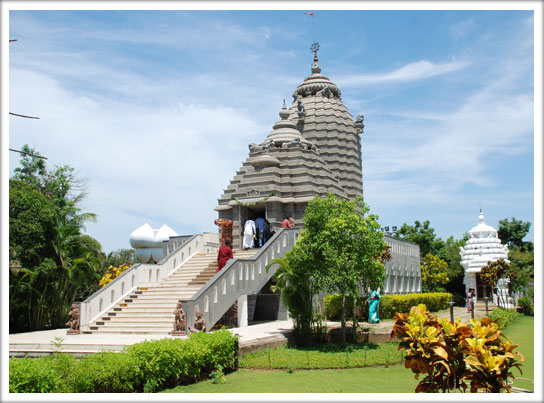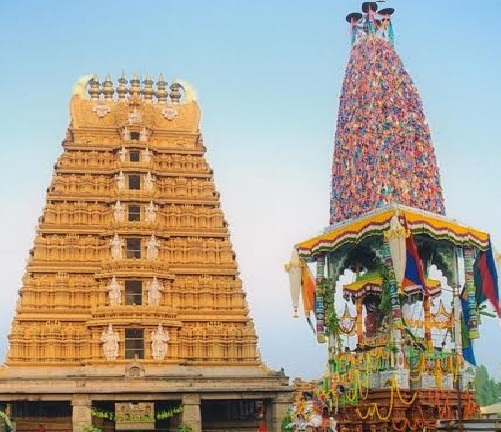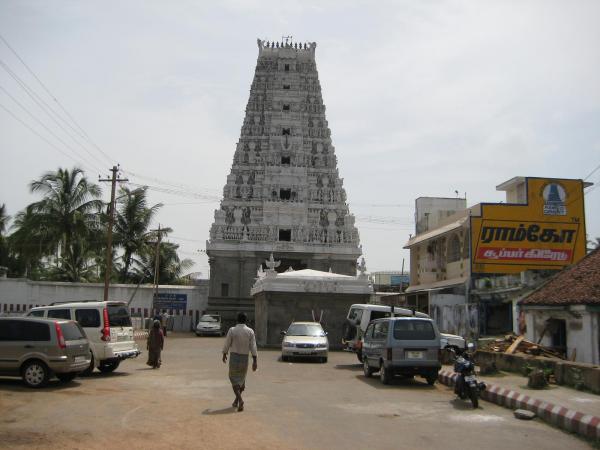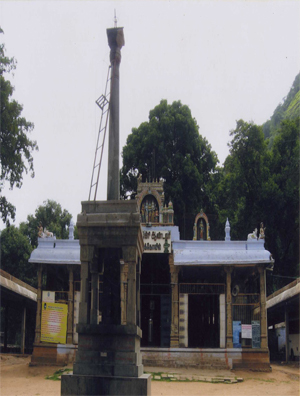Main god: lord jaganathan kasi viswanath

Location:
jaga nath temple Kannathur Reddykuppam (ECR)
Kovalam Post,
Chennai – Tamilnadu, Pin – 603112
India

Festivals:
Dola Yatra
This is Celebrated from the tenth day of the bright fortnight of Falguna up to the full moon day. The representative deities Dologobinda, Bhudevi and Sreedevi are taken in a procession to Dolabedi located outside the outer compound wall of the main Temple and special rites are performed.

Chandan Yatra
This Takes place in the month of Vaisaksha and continues for long 42 days. But, generally speaking it is a Festival of first 21 days only. The first period of 21 days is known as “Bahar Chandan”or outer Chandan. During this period, the representative images of Rama,Krushna, Madanmohan,Sridevi and Bhudevi are taken in a procession to Narendra tank.The images of Siva from 5 Siva Temples known as “Pancha Pandavas” also accompany them to the Narendra tank, At Narendra tank the images play in well decorated boats and are worshipped. The second period of 21 days known as “Bhitar Chandana” is celebrated inside the Temple. The rites observed on this period are not popularly enjoyed.
Snana Yatra
This Festival takes places in the month of Jestha. it is popularly known as the Deba Snana Purnima.This is the first occasion in the course of a year when the deities Jagannath, Balabhadra,Subhadra along with Sudarsan and Madanmohan are brought out from the Temple and taken in procession to Snana Bedi located in the North East corner of the outer compound.The deities are bathed there with 108 pitchers of water drawn from a well near the Northern Gate. Here,Jagannath and Balabhadra are dressed like Lord Ganesh of the Purans with the head of an elephant. Lord Balabhadra, Devi Subhadra & Lord Jagannath in Snana Bedi Click to enlarge Three Ratha(Chariot) The Chariots The three Chariots of Balabhadra,Subhadra and Jagannath are constructed each year with Sal wood, customarily brought from the exprincely State of Dasapalla,by a specialist team of carpenters who have hereditary rights for this.Lorrd Jagannth’s Chariot is called nandighosa. it is forty-five feet square at the wheel level.It has sixteen wheels,each of seven feet diameter, and is decked with rred and yellow coverings of cloth. The Chariot of Lord Balabhadra,called the Taladhwaja,has fourteen wheels,each of seven feet diameter, and is covered with red and blue cloth.Its height is forty-four feet. The Chariot of Subhadra,known as darpadalan is forty-three feet high with twelve wheels, each of seven feet diameter. This Chariot is decked with the coverings of red and black cloth. Around each of the Chariots are nine Parsvadevatas, the guardian deities,and four horses. Each chariot has a Charioteer called Sarathi,Matali,Darruka and Arjuna are the three charioters attached respectively to the three Chariots of Jagannath, Balabhadra and Subhadra.
Navakalevara
As a man discarding worn out clothes takes other new ones,so also the embodied soul, casting off worn out bodies enters into others which are new.In the light of this truth of the Bhagavat Geeta, Navakalevar can be interpreted as a ceremony for entering into new bodies, when Lord Jagannath, Balabhadra, Subhadra and Sudarshan cast off their old bodies and take new ones. It is called Navakalevar. The year which has two months of Ashadha is regarded auspicious for Navakalevar ceremony.It usually occurs in 8,11 or 19 years. The new bodies of the deities are made out of the newly cut Yeem trees. The previous navakalevars were held in 1733,1744, 1752, 1771, 1790, 1809, 1828, 1836, 1855, 1874, 1893, 1912, 1931, 1950, 1969, 1977 and 1996.
Ratha Yatra (Chariot Festival)
The most splendid of the innumerable festivals celebrated round the year in the holy city of Puri, the Ratha Yatra is the grand culmination of a series of celebrations spread over the summer and the monsoon months.
Akshaya Trutiya tithi marks the beginning of the construction of the Rathas (chariots) for the ceremonial journey and sojourn of Lord Jagannath, Balabhadra and Subhadra at the Gundicha Temple for a week.

On the full-moon day of the month of Jyestha (May-June) in the Snana Yatra, the Bathing Festival, when the three deities move in colourful processions to a platform in the outer enclosure of the temple, the Snana Vedi, the bathing platform, where they bath with one hundred and eight pitchers of perfumed water drawn from a temple well once a year. After the ritual bath, the deities assume the special elephant form, recalling the legend of the Lord’s affection for a devotee, whom He proved that he was in fact another manifestation of Lord Ganesha.
At the end of the Snana Yatra day, the holy triad,supposedly afflicted with fever, do not return to their pedestal in the sanctum.they stay away from the public view for a period of fifteen days, called Anasara, after which they appear in their Navayauvana Vesha, literally a renewed youth, on the new moon day of the Month of Ashadha.During this fortnight the icons get a fresh coat of painting which gets washed out on the day of the Bathing Festival. During this period the deities eat only fruits other restricted diet and soft drinks.Cloth paintings. representing the deities called Anasara Pati, are displayed beyond the enclosures hiding the deities from the devotees to see and worship.
Finally comes the Ratha Yatra on the second day of the bright fortnight of the month of Ashadha, when the three deities come out of the temple in a specacular procession called Pahandi. The deities, which are colossal wooden statues, adorned with giant floral crowns, called Tahias, are literally pulled, pushed and dragged in rhythmic movement to the accompaniment of the beat of cymbals, drums and chanting of their names in chorus by devotees in frenzied ecstasy. After all the deities are seated in their respective chariots starts the Chhera Pamhara, the ritual of sweeping of the chariots with a golden broom by the Gajapati King of Puri,the foremost servant of God,the Adya sevaka of Lord Jagannath. The King comes from his palace on a richly decorated palanquin. Chhera Pamhara is a symbolic rite which proclaims that the King, like others, is but an humble servant of the real sovereign, Lord Jagannath.
The most exciting part of the Rath yatra is the pulling of chariots by thousands of people who lay their hands on the sturdy ropes and drag the massive structures along the Bada-Danda,the grand road. The chariot of Balabhadra moves first, followed by those of Subhadra and Jagannath. The chariots grind forward slowly until they reach the Gundicha temple and the three deities rest for a night at the entrance on their own chariots. They enter the Gundicha temple on the next day in the usual Pahandi style and stay there for seven days.

Godess Laxmi,who gets angry for being left out at the temple, proceeds to the Gundicha temple to meet her Lord, Jagannath , on the Hera Panchami day,the fifth day of the fortnight. After having a stealthy look at her Lord, she returns to the temple, damaging a part of Jagannath’s chariot in anger and disgust.
The deities, after the seven-day stay at Gundicha Temple, their garden house, commence their return journey. It is called Bahuda Yatra held on the tenth day of bright fortnight of Ashadha. The return of the chariots takes place in the same order as in the Rath Yatra. Balabhadra’s chariot moves first,followed by those of Subhadra and Jagannath. On his way back,Jagannath stops for a while at Ardhasani temple, popularly called Mausi Ma temple or the temple of Aunt. He accepts from the aunt His favourite rice cake,Poda Pitha. The three chariots pulled by thousands of devotees, reach back the Simhadwara in the late afternoon of the Bahuda day and the deities remain seated on their chariots. On the next day known as the Bada Ekadasi,the three deities, are attired in costumes of glittering gold and are worshipped by thousands of devotees. This form of the deities is known as the famous Suna Vesa. On the Dwadasi day, the three deities go back to their original place,the Ratna Simhasana, literally the jewelled platform, with the usual fanfare and the Pahandi style.Their arrival into the Sanctum sanctorum marks the end of the Ratha Yatra the grand festival of chariots.
The Chariot (The Ratha)
At Chennai Dakshinakshetra, the Chariot of dieties (Lords Balabhadra, Jagannath and Devi Subhadra along with Sudarshan) is designed and constructed in stainless steel with the help of personnels from IIT Madras and Ashok Leyland. It is 16 feet height and unique in design

Workship timing:
1. “DWARPHITA & MANGAL ALATI ” AT 5.30 A.M. (Opening of the door and morning prayer)
The door opens early in the morning by the pujari in the presence of the security person after verification of the locking system . Soon after the opening of the door, sacred lamps is offered to the deities which is called “Mangal Alati”.
2. “MAILAM” AT 6 A.M.
“Mailam” is a word used in Shri Jagannath Temple,which means change or removal of dresses and flowers etc. At this time some specific sevaks change the clothes, flowers, Tulasi leaves of the deities worn on the previous night.
3. “ABAKASH” – 6 A.M. TO 6.30 A.M.
Purificatory rites like brushing of teeth and bath is known as “Abakash “. At this time Temple almonak ( Astrological Calender) is refffered and read out the tithi and other astrological details of the day and according to that, that very days rituals are performed.
4. “MAILAM” and Pravatha Puja 6.45 A.M to 8.00 A.M.
At this time deities change their clothes ( Tadap & Uttariya ) and wear another set of clothes. A sevak keeps in the sanctum Akhanda Baitha i.e. one lamp which burns till ” Pahuda ” or the time of the retirement of the deities to bed.
5. ROSHA HOMA, SURYA PUJA, AND DWARAPAL PUJA- 8 A.M. to 8.30 A.M.
While the deities are given the decorations and alankaram associated Pujari will organize and arrangements are made for prasada preparation and ” Surya puja “. Then the images of two gate keepers named Jaya and Vijaya on the entrance of the Jagamohan of the Temple are worshipped.
6. GOPALA BALLAVA PUJA – 9 A.M. (Breakfast of the God)
The prescribed time at 9 A.M the break fast puja is offered.
7. MADHYANHA DHUPA (MORNING LUNCH OFFERING) 12.30 A.M.
Two pujapandas organize the puja for offering the lunch madhyanha prashad which includes mainly cooked rice, vegetable curry and dal
8. MADHYANHA PAHUDHA 1 P.M. to 3.30 P.M.
If rituals have been performed in time and if time permits, the Deities retire for the afternoon.

9. SANDHYA ALATI
In the evening again sacred lamps are offered to the deities after Madhyana Dhupa Mailam. On Ekadasi day,the deities change their clothes and wear another sets after “Alati” is over.
10. SANDHYA DHUPA – 6.30 P.M. to 7 P.M.
After “Sandhya Alati” again Bhogas are offered to the deities in the same manner like Madhyan Dhupa but this time Bhoga amount is mostly fruit and sweets. After Puja again lamp offering is made which is called as “Jaya Mangala Alati”.
11. MAILAM AND CHANDANA LAGI
After “Sandhya Dhoopa” deities are annointed with Sandal paste mixed with champhor, keshar and Kasturi.
12. BADASINGHAR VESHA
After Chandan lagi, deities are dressed with silken robes and flower ornaments.
GENERAL DARSHAN
Darshanof the deities is open to all irrespective of caste, creed, religion, Nationality and gender during the opening times of the shrine complex (6.30 A.M to 1.00 P.M, 3.30 P.M to 8.00 PM)
History:
DAKSHINAKSHETRA situated on the seashore of Kanathur Reddykuppam (before Mayajaal and after Toll plaza on the ECR ) is unique in many respects. Its serene and peaceful environment amidst green lawns and flower gardens Is already a special attraction for all spiritual seekers. The lofty granite shrine, In Orissan architectural style and dedicated to LORD Jagannath,along with Other six shrines (Ganesh , Siva , Lakishmi , Vimala , Navagraha and Yajna Nursingha) overlooks the sea in awe-inspiring splendor. A marble floored meditation hall and an open Yajna mandap are added advantages. A unique union of three auspicious trees ( Neen , Banian and Pipal ) , standing in the middle of Vahana-mandap next to the Vinayaka Shrine is believed to have divine sanction as Kalpataru.
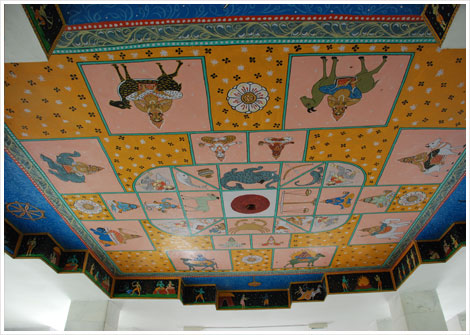 |
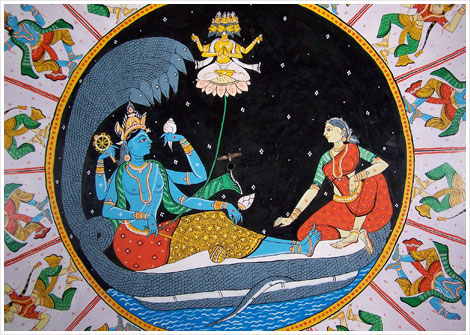 |
visit.tmpooja.com/info

